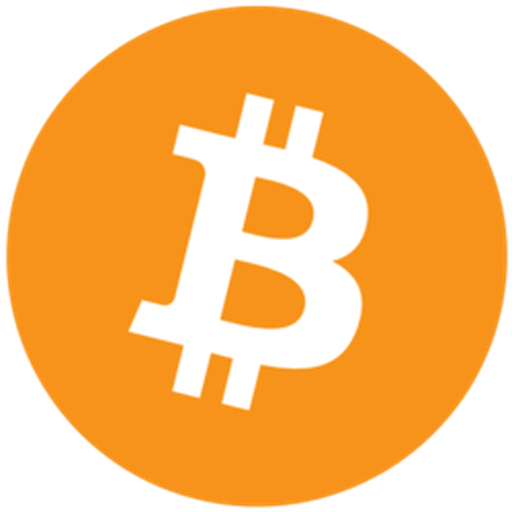Bitcoin vs Qubic – Price, Market Cap & Performance Compared
Which coin performs better – Bitcoin or Qubic?
We compare the current price (113 413 $ vs 0.00000 $), market cap (2 259 897 570 352 vs 204 307 185) and all-time high (124 128 vs 0.00001).
Find out which one stands out right now!
Bitcoin is currently trading at 113 413 $, while Qubic stands at 0.00000 $. These cryptocurrencies differ not only in price but also in market presence.
The market cap of Bitcoin is around 2 259 897 570 352, and Qubic has about 204 307 185. Their respective all-time highs are 124 128 for Bitcoin and 0.00001 for Qubic.
Daily trading volume and the 24h price change (1.3122 % vs 7.05077 %) also offer key insights.
Compare all metrics now and see which coin fits your investment strategy best!
Bitcoin
Bitcoin stands as the pioneering cryptocurrency that introduced the world to the concept of decentralized digital currencies. It operates on a peer-to-peer network that allows users to exchange value without the need for intermediaries like banks or financial institutions. As a decentralized form of currency, Bitcoin has sparked a global conversation about the future of money and has paved the way for the development of thousands of other cryptocurrencies.
more informationQubic
Qubic aims to bridge the gap between blockchain technology and smart contracting by introducing a unique system that enhances the functionality of decentralized applications. Its innovative approach leverages oracles and distributed computing to enable complex computations and off-chain data integration, providing greater versatility for developers. As the ecosystem evolves, Qubic has the potential to significantly impact how decentralized solutions are implemented across various industries.
more information

|

|
|
|
|
General Information |
|
|---|---|
|
Title
Bitcoin
|
Title
Qubic
|
|
Symbol
btc
|
Symbol
qubic
|
|
Whitepaper
|
Whitepaper
|
|
Website
|
Website
|
|
Community
|
Community
-
|
|
Last Updated
2025-09-24 23:29
|
Last Updated
2025-09-24 23:28
|
Price Data |
|
|---|---|
|
Current Price $
113 413 $
|
Current Price $
0.00000 $
|
|
High 24h
113 941 $
|
High 24h
0.00000 $
|
|
Low 24h
111 369 $
|
Low 24h
0.00000 $
|
|
Price Change 24h
1 468.93 $
|
Price Change 24h
0.00000 $
|
|
Price Change % 24h
1.3122 %
|
Price Change % 24h
7.05077 %
|
Market Data |
|
|---|---|
|
Market Cap
2 259 897 570 352
|
Market Cap
204 307 185
|
|
Total Volume
46 418 216 381
|
Total Volume
5 789 945
|
|
Market Cap Change 24h
29 438 330 305
|
Market Cap Change 24h
13 746 882
|
|
Market Cap Change % 24h
1.31983 %
|
Market Cap Change % 24h
7.21393 %
|
|
Return on Investment (ROI)
-
|
Return on Investment (ROI)
-
|
Supply and Availability |
|
|---|---|
|
Circulating Supply
19 925 728
|
Circulating Supply
125 480 811 716 380
|
|
Total Supply
19 925 728
|
Total Supply
157 880 824 393 900
|
|
Max Supply
21 000 000
|
Max Supply
200 000 000 000 000
|
Historical Data |
|
|---|---|
|
All Time High (ATH)
124 128
|
All Time High (ATH)
0.00001
|
|
ATH Change %
-8.71521 %
|
ATH Change %
-87.02976 %
|
|
ATH Date
2025-08-14 00:37
|
ATH Date
2024-03-02 12:28
|
|
All Time Low (ATL)
67.81
|
All Time Low (ATL)
0.00000
|
|
ATL Change %
167 002 %
|
ATL Change %
131.68468 %
|
|
ATL Date
2013-07-06 00:00
|
ATL Date
2025-03-10 17:12
|
Bitcoin
An Ageless Pioneer: Bitcoin
Bitcoin, symbolized as BTC, often referred to as the "digital gold," stands as a robust innovation in the world of cryptocurrencies. Since its inception, Bitcoin has served as a cornerstone in the rapidly evolving blockchain ecosystem. Let's explore the foundation it has built, the challenges it faces, and the potential it holds for the future.
The Advantages of Bitcoin
Bitcoin’s primary advantage lies in its decentralized nature. Unlike traditional currencies, Bitcoin is not governed by any central authority, providing a sense of autonomy and financial freedom to its users. Transactions are conducted on a peer-to-peer network, reducing transaction times and associated fees, especially for international payments. Furthermore, Bitcoin provides a level of transparency and security through a public ledger known as the blockchain, ensuring each transaction is secure and immutable.
Bitcoin has been praised for being a hedge against inflation. As a deflationary currency with a capped supply of 21 million coins, it becomes a valuable asset in times when traditional currencies face devaluation.
The Disadvantages of Bitcoin
Despite its numerous advantages, Bitcoin is not without its challenges. The most significant being its price volatility, which can deter those with lower risk tolerance. This volatility can be attributed to several factors including market speculation, regulatory news, and macroeconomic trends.
Additionally, Bitcoin’s scalability is a concern. The network can only process a limited number of transactions per second, leading to higher fees and slower transaction times during peak usage. Also, although pseudonymous, Bitcoin transactions can be tracked on the blockchain, which might concern users seeking greater privacy.
Development History
Since its launch in 2009 by the pseudonymous Satoshi Nakamoto, Bitcoin has undergone significant changes and growth. Initially met with skepticism, its adoption has surged over the years, leading to increased investment from individuals and institutions alike. Bitcoin’s evolution is marked by several key moments, such as the introduction of the Lightning Network to enhance scalability, and the increased interest in Bitcoin as a legitimate investment vehicle.
Future Prospects of Bitcoin
Looking ahead, Bitcoin holds immense potential as a mainstream currency and a digital store of value. As technologies improve, scalability and energy efficiency may no longer remain bottlenecks. Bitcoin could see widespread adoption as it integrates with existing financial systems and garners regulatory clarity.
Furthermore, the future of Bitcoin could be shaped by its role in the development of decentralized finance (DeFi) platforms and as the base currency against which other cryptocurrencies are valued.
Conclusion
Bitcoin remains a pioneering force in the cryptocurrency world. Despite facing challenges, its strengths and continuous innovations keep it firmly positioned at the forefront of digital currencies. Whether its role as a financial disruptor or as a digital asset, Bitcoin's journey continues to captivate and inspire the evolution of global finance.
Qubic
Introduction to Qubic
Qubic is an innovative cryptocurrency project that aims to integrate smart contracts, oracles, and data storage into a unified blockchain system. Developed as part of the IOTA ecosystem, Qubic focuses on enhancing the capabilities of distributed ledger technology by introducing features like decentralized oracle networks and smart contract functionality. This article will explore the unique attributes of Qubic, its historical performance, and potential future outlook.
Historical Performance
Since its inception, Qubic has undergone significant fluctuations in value. The coin reached its All-Time High (ATH) of approximately $0.00001256 on March 2, 2024, showcasing the potential rally heights that can be achieved within the cryptocurrency market. However, it has experienced a notable decline since then, currently trading at around $0.0000016, which represents an 87.25% drop from its ATH. The All-Time Low (ATL) was recorded at $0.00000137 on August 5, 2024, indicating a volatile trading environment for investors.
Advantages of Qubic
One of the standout features of Qubic is its integration with the IOTA network, which is known for its feeless transactions and scalability. This allows Qubic to potentially handle a large volume of transactions without the fees commonly associated with traditional blockchain networks. Additionally, the implementation of smart contracts means that users can automate transactions and agreements, increasing efficiency. The project’s focus on oracles also enhances its utility by allowing real-world data to interact with blockchain applications seamlessly.
Challenges and Disadvantages
Despite its promising technology, Qubic faces several challenges. The cryptocurrency market's inherent volatility poses a risk to long-term investments, as evidenced by Qubic’s price history. Moreover, being in an ecosystem dominated by well-established competitors can make it challenging for Qubic to gain significant market share. The project's dependence on the broader IOTA network's performance and adoption can also be seen as a double-edged sword, offering synergy but creating vulnerability to external factors.
Market Dynamics and Future Outlook
As of now, Qubic boasts a market capitalization of approximately $187 million, with a circulating supply of around 116.88 trillion tokens. The total supply cap of 200 trillion tokens offers potential for growth but could also lead to inflationary pressures. Over the last 24 hours, Qubic experienced an increase in price by about 6.59%, alongside a market cap rise of approximately 6.49%. If the trend of increasing market activity continues, Qubic may have the chance to recover from its depreciation.
Conclusion
In conclusion, Qubic represents an intriguing opportunity within the cryptocurrency landscape, especially for those interested in the synergies of smart contracts and oracle networks built on the IOTA foundation. While challenges remain, particularly concerning market volatility and competition, the technological advancements and unique positioning of Qubic may lead to renewed interest and potential growth in the future. For those looking to explore innovative blockchain solutions, Qubic could be a coin worth keeping an eye on.

